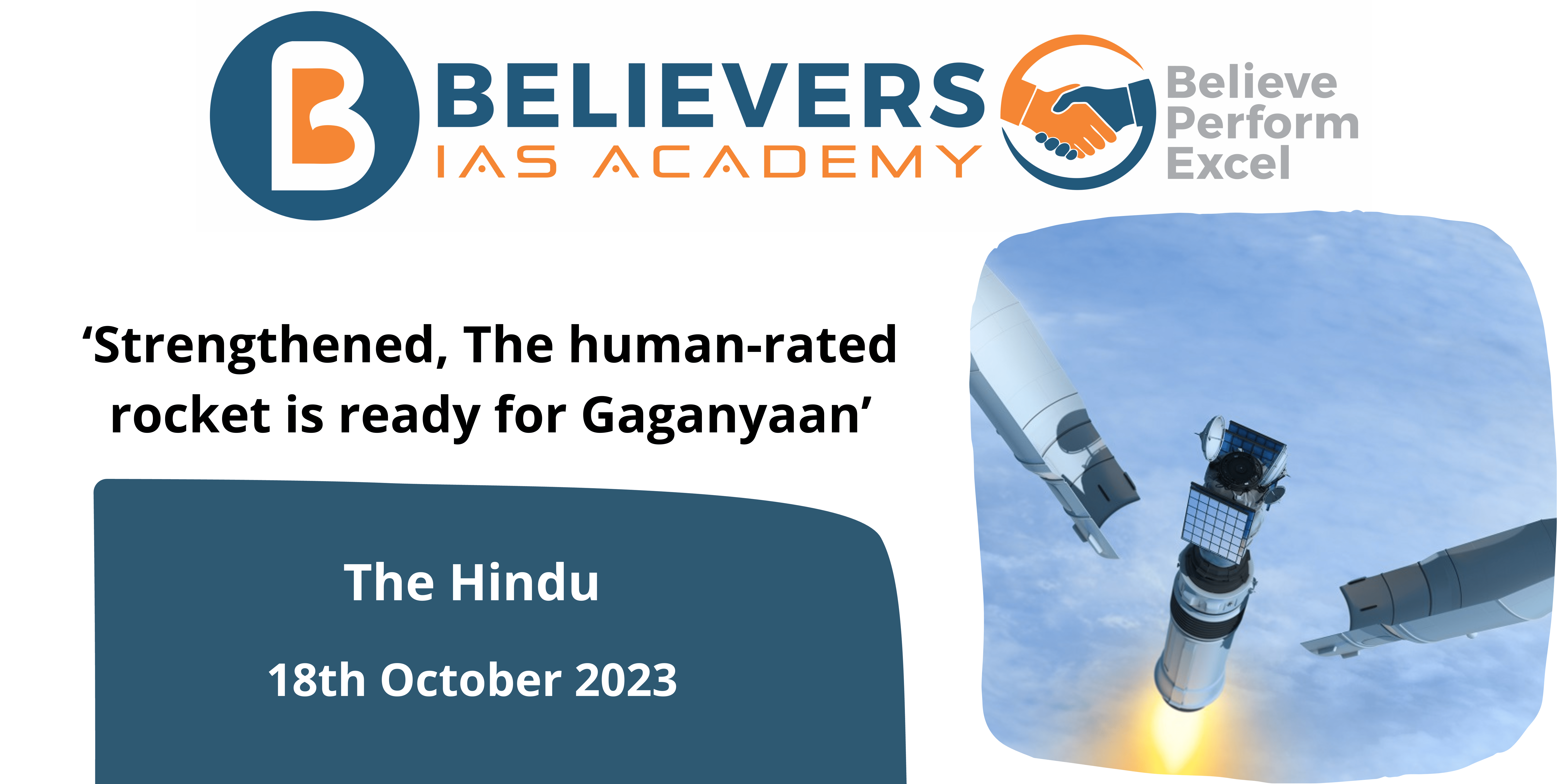‘Strengthened, The human-rated rocket is ready for Gaganyaan’
Context :
The head of ISRO says in an interview that hundreds of tests are being planned as India gets ready to launch astronauts into space in 2025. He claims that while the country looked to Russia, Europe, and the United States for a lot of technology, many of them declined, so the space agency will have to develop systems like environmental control and life support systems internally. He also says that the number of astronauts that India will launch into orbit on the first try is not set in stone.
What are the main points from the interview?
- Overview of the Gaganyaan Project:
- This is India’s far-reaching effort to launch astronauts into space.
- The launch vehicle, crew module, crew escape system, and numerous other systems and technologies are among the many parts of the project.
- Launch Vehicle and Human Rating:
- The crew will be transported into orbit by the launch vehicle, LVM-3.
- LVM-3 has passed a “human rating” procedure to make sure it satisfies the safety standards for space travel by humans.
- After extensive testing, it has been determined that all of LVM-3’s systems and engines are human-rated.
- Crew Module and Challenges:
- For the Gaganyaan project, a new crew module is being constructed.
- ISRO is obtaining the crew module from other nations, like as Russia, Europe, and the US, due to a lack of domestic manufacturing capabilities.
- There have been difficulties in acquiring technology for the crew module.
- Critical Systems and Tests:
- Several vital systems, such as the Integrated Vehicle Health Management System (IVHMS), Crew Escape System (CES), and Environmental Control and Life Support Systems (ECLSS), are being developed.
- ISRO intends to carry out a variety of tests, including abort, vehicle, rocket, and helicopter-based tests.
- Throughout one to one and a half years, testing will take place, guaranteeing thorough assessment.
- Deployment of Astronauts with a Safety Priority:
- There is still room to send one or more astronauts on the final trip. The exact number has not been determined yet.
- Rather than sticking to a timeline, the main priorities are reaching the highest standards for safety and mission accomplishment.
- For human spaceflight, ISRO places a high priority on capacity development and technological improvements, stressing the need to get it right the first time.
Conclusion
This strategy demonstrates ISRO’s dedication to rigorous testing and safety, as well as its readiness to put in the time required to develop the operational and technological capabilities required for manned space travel.




